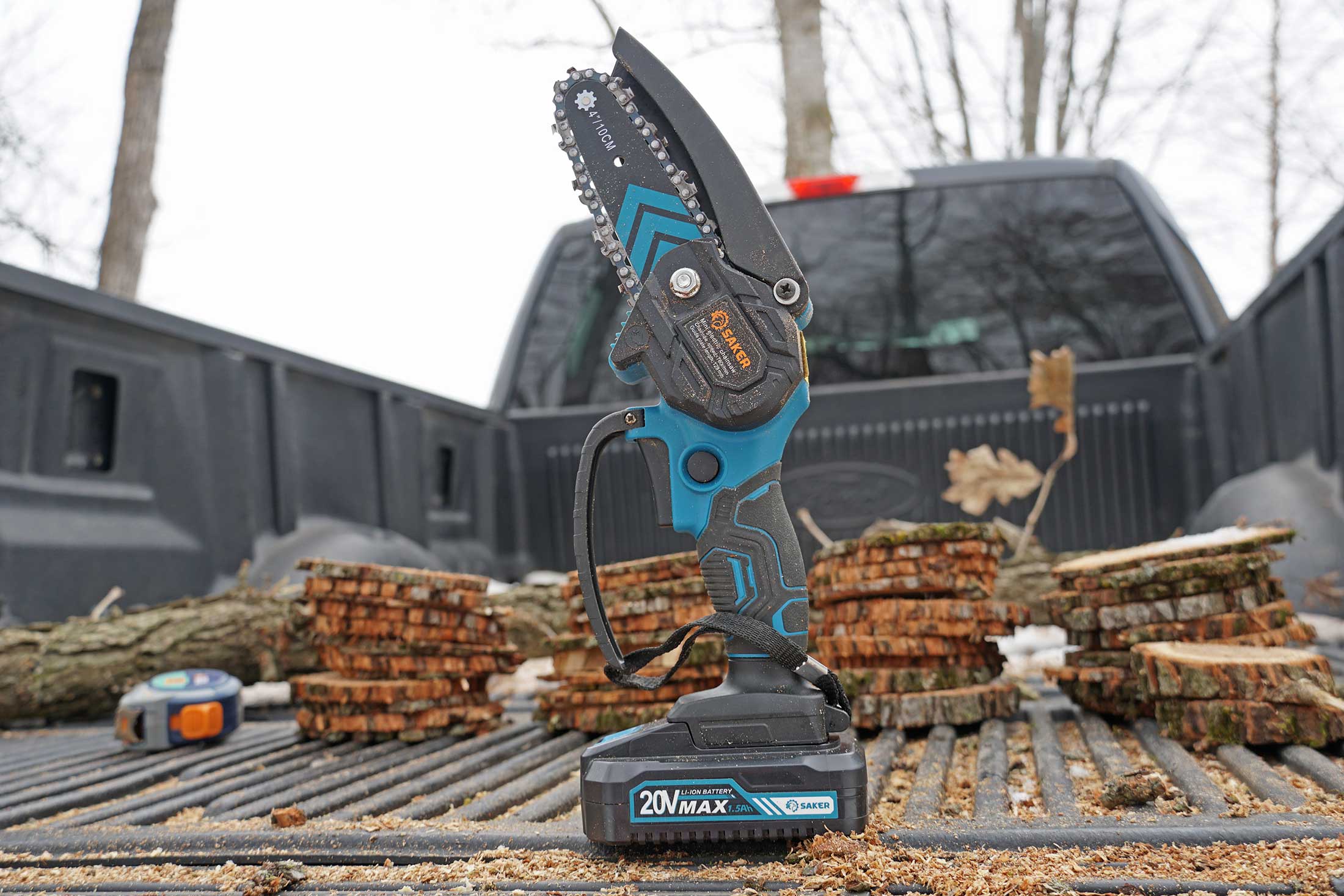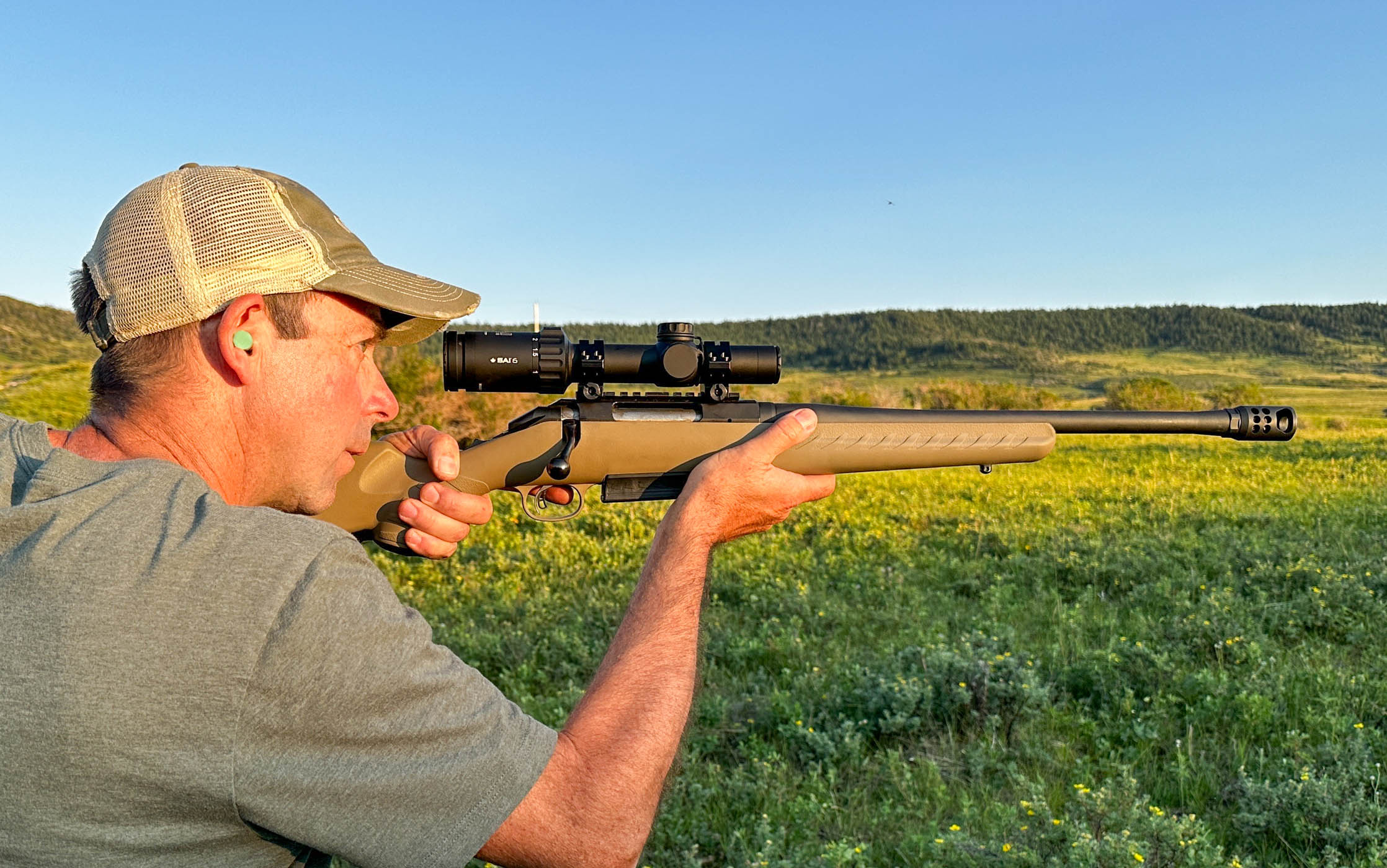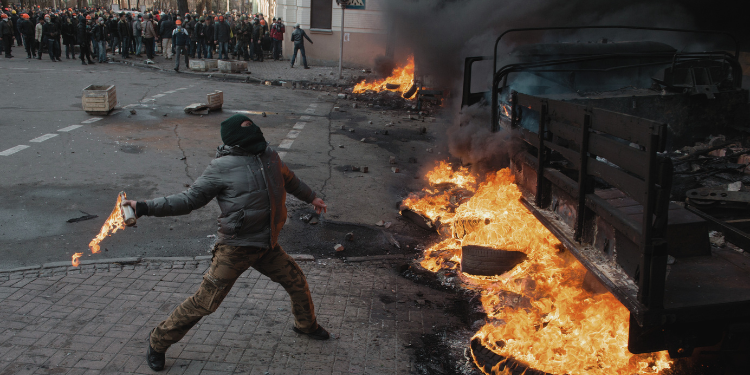Best Coyote Calls of 2024

We may earn revenue from the products available on this page and participate in affiliate programs. Learn More ›
Depending on your hunting situation, an effective coyote call might be an electronic one that can cut through wind or terrain. On the other hand, open reed and mouth calls have drawn plenty of coyotes to their demise. Both have their place, and I’ve had luck using a combination of them in my 22 years hunting coyotes. In fact, most consistently successful predator hunters rarely hunt without both types of calls. Like other wild game, you’ll be hard pressed to find one call that fits every hunt or even every dog. It’s best to have a variety of calls, so you’re prepared whether you’re calling a wary coyote that hangs up just out of range or one that runs blindly into your setup. To make sure you’re prepared no matter where you’re hunting, I’ve narrowed down a list of the best coyote calls to use this season.
How We Picked The Best Coyote Calls
I’ve hunted with these calls and many others over the years. For this review, I covered the needs of every caliber of coyote hunter and budget. With each call, I considered the ease of use and sound quality. For electronic calls, I focused on battery life, remote distance, speaker clarity, and additional features that benefit hunters.
Best Coyote Calls: Reviews and Recommendations
Best Electronic: FOXPRO XWAVE
See It
Key Features
- Remote Operating Distance: 100 yards in ideal conditions
- Uses three AA batteries
- 50 presets
- Bluetooth compatible
- Auto or manual volume
- Adjustable pitch
Pros
- Store or accesses up to 1,000 sounds
- Easy to read screen remote
- Long-lasting battery life
Cons
- Bulky
- No built-in stand to elevate the call
- Expensive
Of all the electronic calls I’ve used, the FOXPRO XWAVE has more advanced features, like hands-free sound switching, a 100-yard remote control distance, and Bluetooth capability, which gives the user access to over 1,000 sounds. The FOXPRO XWAVE features two positional Extreme High Definition (XHD) speakers. Both horn-style speakers feature an added tweeter for improved frequency. They produce extremely loud, realistic sounds, so you can call in coyotes at crazy distances in a variety of terrain or conditions.
You can operate the XWAVE with the popular TX1000 remote that features a full-color graphic LCD screen, which displays the sound list or sound categories and has a barometer, moon phase, temperature, and battery level indicators, as well as a stand timer. You can also run the XWAVE by Bluetooth and play other sounds from your library.
I used this call more than any other last year and had more than a few coyotes come running within shotgun range. Whether I hunted in rain, snow, or windy conditions it cut through them all. The XWAVE might run more than your predator rig, but if money isn’t an issue and you want a reliable, realistic call, this one is hard to beat.
Read Next: Best Thermal Scopes
Best Distress Call: Flextone Game Calls Dying Rabbit

See It
Key Features
- Flexible body and sound chamber
- Includes lanyard
- Produces dying rabbit sound
Pros
- Makes loud or subtle calls
- Easy to use
- Realistic distress sounds
- Budget-friendly
Cons
- Soft body can collapse when you’re trying to direct a call
With the Dying Rabbit, you can easily manipulate the tone and volume to fine tune your distress calls. The Flextone Game Calls Dying Rabbit is a coaxer at close range and an attention-grabber across long distances. Squeeze the end closed for a quiet whine and release it for increased volume. Thanks to the flexible body you can change tone and inflection.
This past winter on a hunt in a wooded river bottom, I was using an electronic call but decided the sound echoed too much. I swapped to the Dying Rabbit and had a coyote respond after a few minutes of calling. Whether you’re on a budget or need a solid backup, this call is too affordable and realistic not to have around your neck.
Best Open Reed Howler: Rocky Mountain Hunting Calls Stealth Parvo
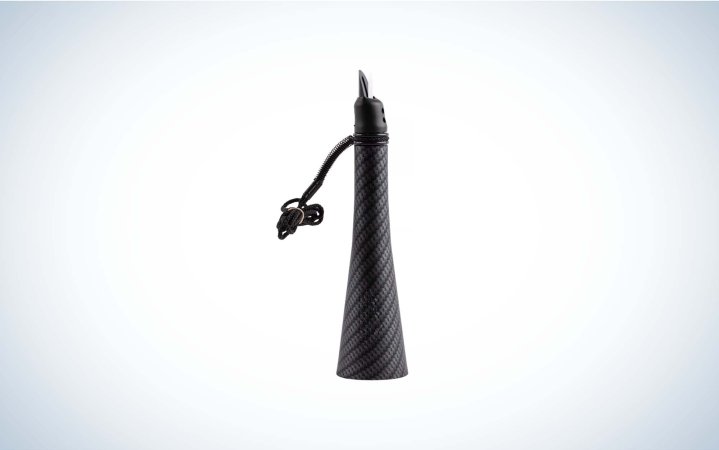
See It
Key Features
- V.E.T.T. air system
- Wide reed
- Plastic body
- Mimics coyotes
Pros
- Versatile coyote sounds
- Loud
- Budget-friendly
Cons
- Takes practice to make realistic sounds
The Stealth Parvo allows you to sweet-talk coyotes into range. This open reed howler produces crisp, clear high notes of young coyotes, barks, and the deeper howls of mature coyotes. Thanks to the V.E.T.T. system, you can produce loud, realistic sounds without exhausting your lungs.
I used the Stealth Parvo on several nights and early mornings to locate coyotes. It works great for sharp barks and howls and for pairing with other distress calls. While it isn’t the most user-friendly for beginners, a little practice can make this a handy call when you need to get the coyotes talking.
Best Budget Electronic: Hunters Specialties Johnny Stewart Executioner
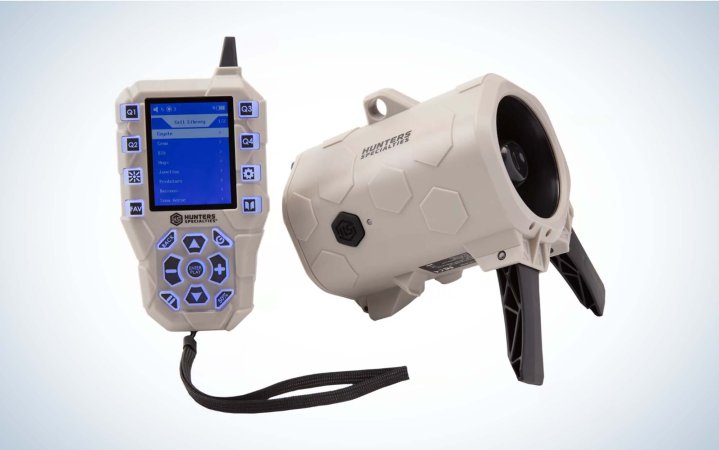
See It
Key Features
- Remote Operating Distance: 300 yards
- Horn speaker
- Carabiner for hanging or mounting
- Uses 12 AA batteries for whole unit
Pros
- Easy to hang or mount
- Intuitive remote
- Built-in kickstand
- Includes premium Johnny Stewart sounds
Cons
- Volume suffered in wide-open areas
The compact size, speaker quality, 300-yard range communication technology, and price make the Executioner a steal. The Johnny Stewart Executioner is an easy-to-use electronic call system in a small package. It includes 100 preloaded Johnny Stewart sounds but has the capacity for more. And the remote has a 2.4-inch color screen and a 300-yard range, which gives you options for your setup.
The speaker will hit volumes up to 120 decibels and reach coyotes at distant ranges. I also appreciate the operating distance, which gives you options when it comes to setups. With the built-in legs you can position it off the ground or use the built-in carabiner to hang or mount it from an elevated position to strategically direct your sounds. Better yet, this call runs at a fraction of other electronic options. I did notice that the sound quality isn’t the best in open country, but that’s to be expected at this price point. Still, the operating distance makes this a great option for hunters on a budget.
Best Diaphragm: FOXPRO Young Gun Howler

See It
Key Features
- Red .004mm latex on top
- Prophylactic .003mm bottom reed
- Medium-sized frame
Pros
- User-friendly
- Flexible tape adjusts your mouth
- Produces realistic howls, barks, and whines of younger coyotes
Cons
- Requires a bit of a break-in for the latex
The Young Gun Diaphragm Howler is a two-reed diaphragm that offers high pitch and tone to imitate young coyotes. This mouth call is easy to use and can produce calls at a wide range of volumes. The Young Gun howler creates realistic young coyote vocalizations such as howls, barks, yips, chirps, and challenges.
No matter when or where I’m hunting, I always carry a diaphragm. The Young Gun has helped me imitate younger coyotes during summer and early fall hunts. I like to mix the Young Gun Howler with sounds from an electronic call to create the illusion that multiple coyotes are hanging out together. Whether you’re trying to call them in during daylight or hunting coyotes at night, if you’re looking to add another call to your arsenal, you should consider this easy-to-use diaphragm.
Best Electronic for Beginners: Primos Dogg Catcher 2
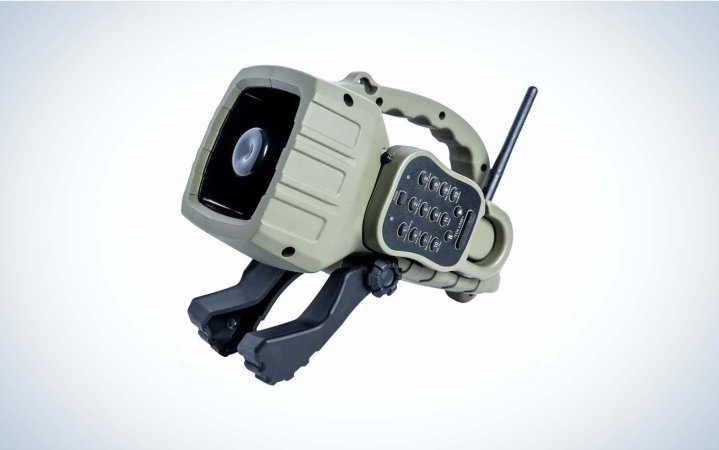
See It
Key Features
- Remote Operating Distance: 100 yards
- Built-in carry handle
- Plays two sounds simultaneously
- Adjustable legs
Pros
- Remote attaches to the side of the call base for easy retrieval
- Decent sounds and volume
- Adjustable legs help direct sound
Cons
- Antenna is a bit flimsy
- Low battery life
The Primos Dogg Catcher 2 is a compact, user-friendly electronic call that takes a lot of the guesswork out of calling for beginners. It includes twelve pre-loaded sounds from expert predator caller Randy Anderson, which is plenty for those who are just getting started, but not so many that you’re overwhelmed with options. Other features include a 150-yard remote range and the ability to play two sounds simultaneously to create realistic stands.
Best for Long Distance: Lucky Duck Super Revolt
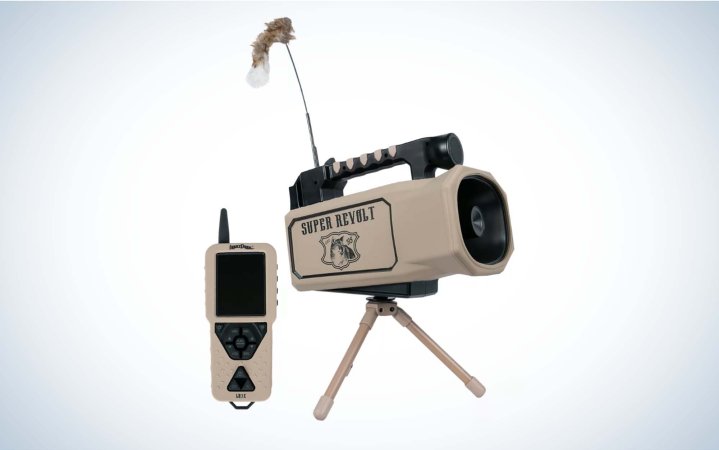
See It
Key Features
- Operating Distance: 100 yards
- Rotational base
- 200 preloaded sounds
- Plays two sounds at once
Pros
- Well-lit remote is easy to see in daylight or dark
- Decoy features plenty of movement
- Holds up to 2,000 sounds
- Cuts through wind
Cons
With an elevated tripod and rotational, high output speakers the Super Revolt carries sounds better than other electronic calls I’ve used in the past. The Super Revolt is built off Lucky Duck’s classic Revolt and features an updated design that is more rugged and durable thanks to its protective silicone cover. It features 200 preloaded sounds with a capacity of 2,000 and can play two sounds at once. And the live animal sounds it includes were compiled by The Verminator, Rick Paillet.
One thing I appreciate about the Super Revolt is the robust tripod, which elevates the call and helps cast sounds farther, especially if you’re hunting open, windy conditions or locations with a lot of terrain features. The included decoy tail features an erratic twitching motion that helps coyotes spot it from long distances.
Things to Consider Before Buying a Coyote Call
Because coyote calls range anywhere from a few dollars to almost $1,000, your first consideration should be how much time you spend hunting. It doesn’t matter where you hunt, you probably won’t drop serious cash on a call that you only use a few times every year. Once you figure that out, here are a few things to help find the calls that best fit you.
Electronic or Not
Electronic calls are helpful, but not everyone needs them. And even with their sound storage capacity and loud volume ranges, electronic calls aren’t a sure-fire every time. If you plan on hunting a variety of regions and double digit days (or nights) every season, then an electronic call might justify the cost. If you’re testing the predator hunting waters, it might be best (and cheapest) to start with an open reed or mouth call before committing to an electronic call. Use this handy map to make sure they’re legal in your state.
Location
If you’re coyote hunting in open prairie country or regions with a lot of vegetation and terrain features, you might need to invest in an electronic call that coyotes at extreme distances can hear. However, if you hunt high density areas, open reed or diaphragm calls can work just fine. But even these situations have exceptions.
Remote Distance
How far do you typically set your caller out when hunting? If you rarely need a remote that reaches over 100 yards, you probably don’t need to drop the extra cash on one that reaches out to 300. But in open terrain, setups can be slim pickings, and sometimes it pays to set up farther back. In this case, opting for a greater remote distance can be the difference in dropping a coyote or going home empty-handed.
FAQs
Depending on the time of year, especially during winter when coyotes are breeding, coyote vocals work when nothing else will. However, on most of my calling stands, the sequence that I’ve had most success with begins with a few subtle coyote howls, pausing for a minute or two, then using prey in distress sounds such as rabbits or rodents. If I don’t have any luck after 15 to 20 minutes with those calls, I finish the calling stand by playing a coyote pup in distress sound. The pup sounds can bring coyotes who have responded to the distress sounds, then stalled out of range.
The best time of the day to call coyotes depends on the time of year you are hunting. Most often, early mornings and evenings seem to be the most active time for coyotes. But during breeding season in late January, February, and early March calling throughout the day can be effective. The breeding season is also a great time to call at night (where it’s legal). If you’re hunting throughout the summer, early mornings and late evenings tend to be the best times to call when temperatures cool down from the day.
The type of terrain you hunt will drastically affect how far a coyote can hear your calls. I hunt in the Midwest, where we have a lot of rolling hills and timber. I have noticed coyotes hear calls from a long distance, but they sometimes lose the exact location of the sound. When I’ve hunted in western Oklahoma with flat, open land, I’ve witnessed coyotes respond to my calling at or just above a mile and come running within fifty yards.
Final Thoughts on the Best Coyote Cals
The best coyote calls can change on any given hunt. That’s why it’s important to have multiple options in your pack. I’ve heard other hunters say that you just need to sound like something a coyote wants to eat. While this is partially true, you also need to consider the time of year and terrain and weather conditions to maximize your calling strategies.
Read the full article here




